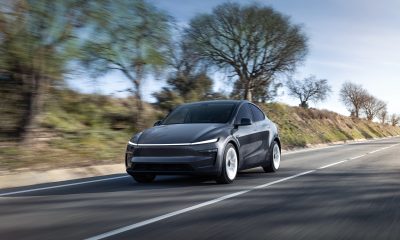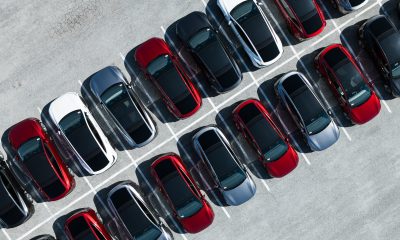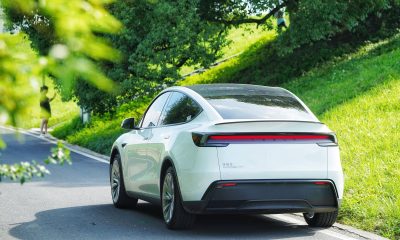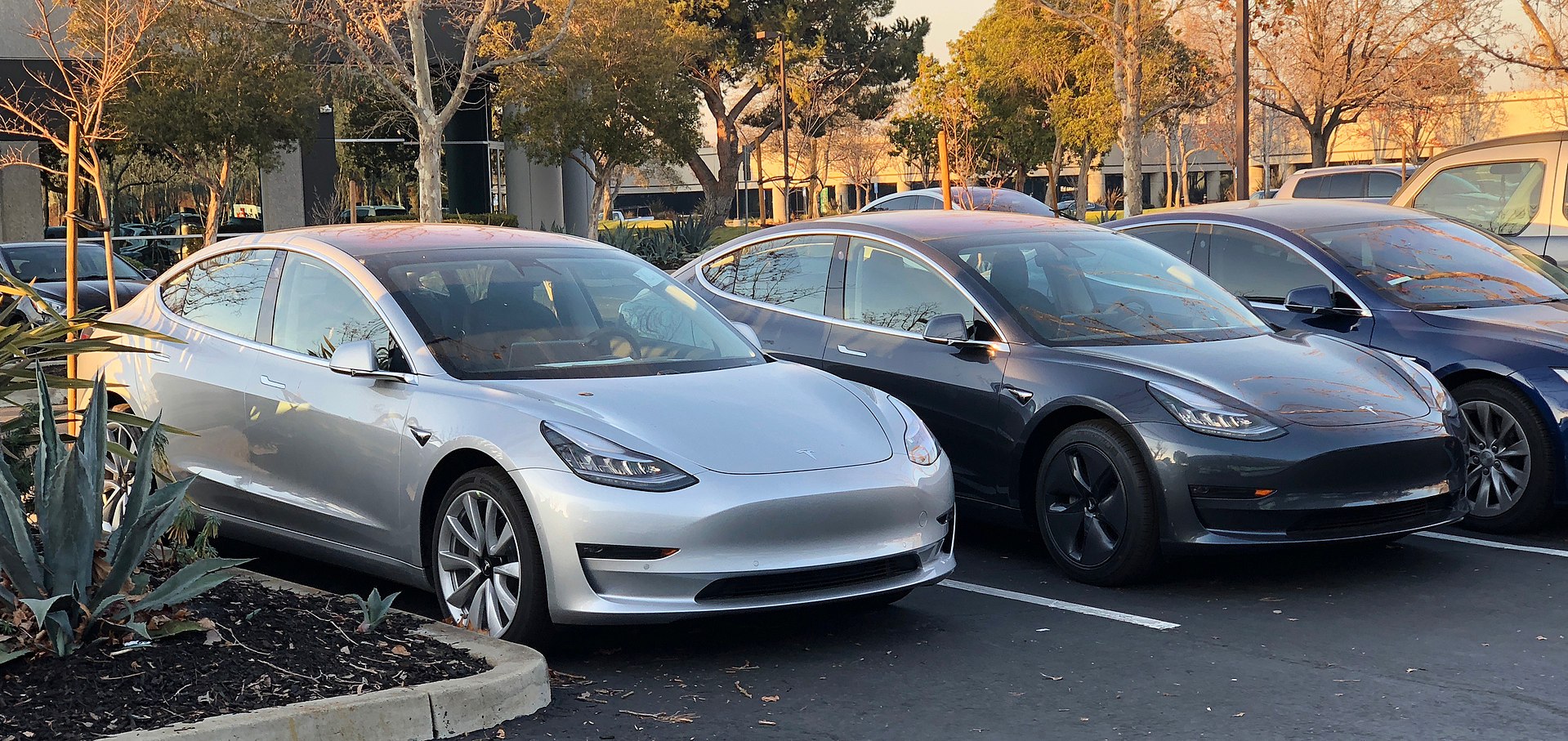

News
Tesla delivers its 200,000th car, triggering the EV tax credit phase-out period
Tesla has delivered its 200,000th vehicle this month, triggering the phase-out period of the $7,500 federal tax credit for electric vehicles offered in the United States.
As seen on Tesla’s official Electric Vehicle Incentives page, the phase-out period for the $7,500 federal tax credit is in effect for all Model S, Model X and Model 3 vehicles delivered on or before December 31, 2018, while buyers taking delivery in 2019 will only be eligible for a subset of that original $7,500 credit. Customers taking delivery between January 1 to June 30, 2019 will be eligible for a $3,750 federal tax credit, or half of the full amount before phase-out. Those taking delivery in the second half of 2019, between July 1 to December 31, 2019 will be eligible for a $1,875 federal tax credit.
The federal credit applied to new electric vehicles, dubbed by the IRS as the Plug-In Electric Drive Vehicle Credit (IRC 30D), affects all EVs that were acquired after December 31, 2009. The credit, which took effect during the previous administration as a means to encourage drivers to adopt zero-emissions vehicles, featured a tiered credit, starting at $2,500 and going all the way up to $7,500 depending on the battery capacity of an electric car. The IRS’ official website describes how the sale of a manufacturer’s 200,000th electric car triggers the tax credit phase-out period.
“The qualified plug-in electric drive motor vehicle credit phases out for a manufacturer’s vehicles over the one-year period beginning with the second calendar quarter after the calendar quarter in which at least 200,000 qualifying vehicles manufactured by that manufacturer have been sold for use in the United States (determined on a cumulative basis for sales after December 31, 2009) (‘phase-out period’).”
Tesla actually played its cards cleverly with regards to the $7,500 tax credit phase-out. Being a car company that exclusively manufactures electric cars, it was inevitable that the company would be the first automaker to hit the 200,000 mark. By reaching this milestone shortly after the second quarter, Tesla actually gave itself, as well as its customers, an additional 18 months to obtain any sort of credit. the $7,500 credit remains in effect for the whole quarter in which the 200,000th vehicle was delivered, as well as the quarter after.
After this point, the credit gets reduced by 50% to $3,750 for two quarters. In Tesla’s case, this corresponds to Q1 and Q2 2019. From Q3 and Q4 2019, Tesla’s vehicles will still be eligible for a tax credit, though it would be reduced to $1,875 by this time. Tesla’s electric cars produced from January 2020 moving forward will not be eligible for tax credits anymore.
In a way, Tesla’s timing for hitting the 200,000 mark appears to be strategic. The company, after all, just recently managed to attain its goal of producing 5,000 Model 3 per week by the end of Q2 2018. Signs from the company, such as test drives for the Model 3, massive batches of new VINs filed one after another, and a new 5-minute Sign & Drive delivery system, all seem designed to deliver as many of the electric cars to customers as fast as possible.
If there is a group of reservation holders that would feel the effect of the credit phase-out, however, it would be those holding out for the Standard Range RWD Model 3, which starts at $35,000. In a Twitter update, Elon Musk stated that Tesla would likely start the production of the base Model 3’s smaller battery pack by the end of 2018. From there, Musk noted that volume production for the vehicle would probably begin in Q1 2019.
In a meeting with investors and analysts this past Tuesday, Tesla’s Senior Director of Investor Relations Aaron Chew reportedly stated that the company is aiming to sustain its 5,000 per week pace for Q3 2018, increasing output to 7,000 cars per week for Q4 2018. By mid-2019, Tesla expects to produce 10,000 Model 3 per week, which corresponds to an output of 500,000 vehicles per year.
If Tesla manages to sustain its 5,000 Model 3 per week rate from August to September 2018, and achieve a steady rate of 7,000 vehicles per week from October 2018 to June 2019 (assuming no production ramps happen within these months), the company would be able to produce 292,000 Model 3. With a 10,000 per week rate from July to December 2019, Tesla would be able to deliver an additional 240,000 more. Thus, if Tesla plays its cards right and ramps the Model 3 in a manner that is careful and precise, it could deliver as many as 532,000 cars that are still eligible for federal credit (albeit the $3,750 and $1,875 credit). Considering that the backlog of 420,000 remaining Model 3 orders are from customers across the globe, there is a good chance that all present reservation holders in the United States would be able to get a credit for their vehicle.
News
Tesla UK sales see 14% year-over-year rebound in June: SMMT data
The SMMT stated that Tesla sales grew 14% year-over-year to 7,719 units in June 2025.
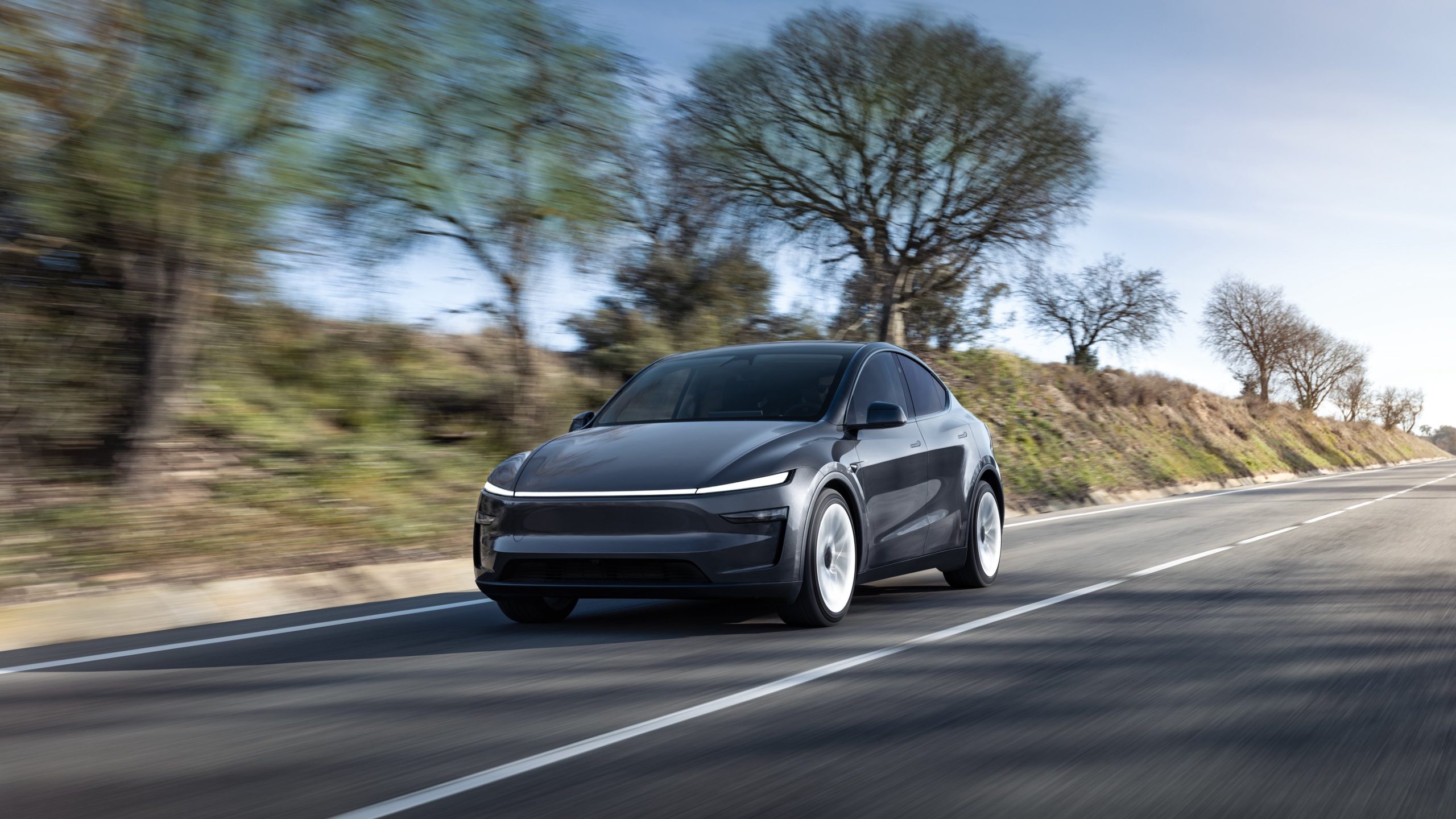
Tesla’s sales in the United Kingdom rose in June, climbing 14% year-over-year to 7,719 units, as per data from the Society of Motor Manufacturers and Traders (SMMT). The spike in the company’s sales coincided with the first deliveries of the updated Model Y last month.
Model Y deliveries support Tesla’s UK recovery
Tesla’s June performance marked one of its strongest months in the UK so far this year, with new Model Y deliveries contributing significantly to the company’s momentum.
While the SMMT listed Tesla with 7,719 deliveries in June, independent data from New AutoMotive suggested that the electric vehicle maker registered 7,891 units during the month instead. However, year-to-date figures for Tesla remain 2% down compared to 2024, as per a report from Reuters.
While Tesla made a strong showing in June, rivals are also growing. Chinese automaker BYD saw UK sales rise nearly fourfold to 2,498 units, while Ford posted the highest EV growth among major automakers, with a more than fourfold increase in the first half of 2025.
Overall, the UK’s battery electric vehicle (BEV) demand surged 39% to to 47,354 units last month, helping push total new car sales in the UK to 191,316 units, up 6.7% from the same period in 2024.
EV adoption accelerates, but concerns linger
June marked the best month for UK car sales since 2019, though the SMMT cautioned that growth in the electric vehicle sector remains heavily dependent on discounting and support programs. Still, one in four new vehicle buyers in June chose a battery electric vehicle.
SMMT Chief Executive Mike Hawes noted that despite strong BEV demand, sales levels are still below regulatory targets. “Further growth in sales, and the sector will rely on increased and improved charging facilities to boost mainstream electric vehicle adoption,” Hawes stated.
Also taking effect this week was a new US-UK trade deal, which lowers tariffs on UK car exports to the United States from 27.5% to 10%. The agreement could benefit UK-based EV producers aiming to expand across the country.
News
Tesla Model 3 ranks as the safest new car in Europe for 2025, per Euro NCAP tests
Despite being on the market longer than many of its rivals, the Tesla Model 3 continues to set the bar for vehicle safety.

The Tesla Model 3 has been named the safest new car on sale in 2025, according to the latest results from the Euro NCAP. Among 20 newly tested vehicles, the Model 3 emerged at the top of the list, scoring an impressive 359 out of 400 possible points across all major safety categories.
Tesla Model 3’s safety systems
Despite being on the market longer than many of its rivals, the Tesla Model 3 continues to set the bar for vehicle safety. Under Euro NCAP’s stricter 2025 testing protocols, the electric sedan earned 90% for adult occupant protection, 93% for child occupant protection, 89% for pedestrian protection, and 87% for its Safety Assist systems.
The updated Model 3 received particular praise for its advanced driver assistance features, including Tesla’s autonomous emergency braking (AEB) system, which performed well across various test scenarios. Its Intelligent Speed Assistance and child presence detection system were cited as noteworthy features as well, as per a WhatCar report.
Other notable safety features include the Model 3’s pedestrian-friendly pop-up hood and robust crash protection for both front and side collisions. Euro NCAP also highlighted the Model 3’s ability to detect vulnerable road users during complex maneuvers, such as turning across oncoming traffic.
Euro NCAP’s Autopilot caution
While the Model 3’s safety scores were impressive across the board, Euro NCAP did raise concerns about driver expectations of Tesla’s Autopilot system. The organization warned that some owners may overestimate the system’s capabilities, potentially leading to misuse or inattention behind the wheel. Even so, the Model 3 remained the highest-scoring vehicle tested under Euro NCAP’s updated criteria this year.
The Euro NCAP’s concerns are also quite interesting because Tesla’s Full Self-Driving (FSD) Supervised, which is arguably the company’s most robust safety suite, is not allowed for public rollout in Europe yet. FSD Supervised would allow the Model 3 to navigate inner city streets with only minimal human supervision.
Other top scorers included the Volkswagen ID.7, Polestar 3, and Geely EX5, but none matched the Model 3’s total score or consistency across categories. A total of 14 out of 20 newly tested cars earned five stars, while several models, including the Kia EV3, MG ZS, and Renault 5, fell short of the top rating.
Elon Musk
Why Tesla’s Q3 could be one of its biggest quarters in history
Tesla could stand to benefit from the removal of the $7,500 EV tax credit at the end of Q3.

Tesla has gotten off to a slow start in 2025, as the first half of the year has not been one to remember from a delivery perspective.
However, Q3 could end up being one of the best the company has had in history, with the United States potentially being a major contributor to what might reverse a slow start to the year.
Earlier today, the United States’ House of Representatives officially passed President Trump’s “Big Beautiful Bill,” after it made its way through the Senate earlier this week. The bill will head to President Trump, as he looks to sign it before his July 4 deadline.
The Bill will effectively bring closure to the $7,500 EV tax credit, which will end on September 30, 2025. This means, over the next three months in the United States, those who are looking to buy an EV will have their last chance to take advantage of the credit. EVs will then be, for most people, $7,500 more expensive, in essence.
The tax credit is available to any single filer who makes under $150,000 per year, $225,000 a year to a head of household, and $300,000 to couples filing jointly.
Ending the tax credit was expected with the Trump administration, as his policies have leaned significantly toward reliance on fossil fuels, ending what he calls an “EV mandate.” He has used this phrase several times in disagreements with Tesla CEO Elon Musk.
Nevertheless, those who have been on the fence about buying a Tesla, or any EV, for that matter, will have some decisions to make in the next three months. While all companies will stand to benefit from this time crunch, Tesla could be the true winner because of its sheer volume.
If things are done correctly, meaning if Tesla can also offer incentives like 0% APR, special pricing on leasing or financing, or other advantages (like free Red, White, and Blue for a short period of time in celebration of Independence Day), it could see some real volume in sales this quarter.
You can now buy a Tesla in Red, White, and Blue for free until July 14 https://t.co/iAwhaRFOH0
— TESLARATI (@Teslarati) July 3, 2025
Tesla is just a shade under 721,000 deliveries for the year, so it’s on pace for roughly 1.4 million for 2025. This would be a decrease from the 1.8 million cars it delivered in each of the last two years. Traditionally, the second half of the year has produced Tesla’s strongest quarters. Its top three quarters in terms of deliveries are Q4 2024 with 495,570 vehicles, Q4 2023 with 484,507 vehicles, and Q3 2024 with 462,890 vehicles.
-

 Elon Musk4 days ago
Elon Musk4 days agoTesla investors will be shocked by Jim Cramer’s latest assessment
-

 News1 week ago
News1 week agoTesla Robotaxi’s biggest challenge seems to be this one thing
-

 Elon Musk2 weeks ago
Elon Musk2 weeks agoFirst Look at Tesla’s Robotaxi App: features, design, and more
-

 News2 weeks ago
News2 weeks agoSpaceX and Elon Musk share insights on Starship Ship 36’s RUD
-

 News2 weeks ago
News2 weeks agoWatch Tesla’s first driverless public Robotaxi rides in Texas
-

 News1 week ago
News1 week agoWatch the first true Tesla Robotaxi intervention by safety monitor
-

 News2 weeks ago
News2 weeks agoTesla has started rolling out initial round of Robotaxi invites
-
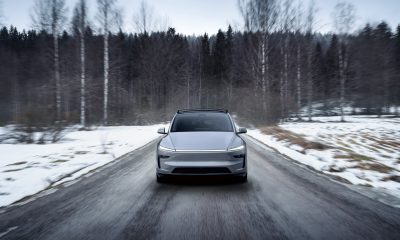
 Elon Musk2 weeks ago
Elon Musk2 weeks agoTesla to launch in India in July with vehicles already arriving: report




